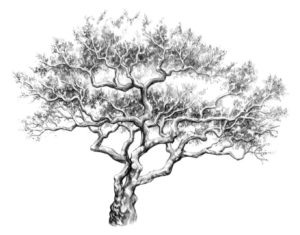 This post is linked from the main post for A Biography of Story, A Brief History of Humanity
This post is linked from the main post for A Biography of Story, A Brief History of Humanity
Pasted below is the Table of Contents for Story’s ‘biography’. (Unfortunately, I do not have here the beautiful Aldine type that we chose for the book.)
Table of Contents
Before we meet Story: facts with imagination
Chapter One: In the beginning were the words
Story is born among our foraging ancestors with whom she shares knowledge for survival and spins our creation stories.
Chapter Two: And the words were inscribed into stone
Demands of trade develop writing systems, allowing ancient tales of Thoth, Gilgamesh, Homer and Valmiki to be written down.
Chapter Three: The hawk, the owl and the elephant
Story recalls the wisdom of the animals as they mingle in the fables of Aesop and Indian storytellers along the Silk Route and over the seas.
Chapter Four: Saints and heroes
Celts migrate across Europe to flourish in the west, and when Christian scribes convert Celtic heroes into saints, Story holds the threads of their myths.
Chapter Five: The fates of champions in long-ships
The sagas of Norsemen raiding and trading from the North and Baltic Seas to the Caspian and to Iceland are gathered up by Snorri Sturluson in the Edda.
Chapter Six: 1001 tales and as many knights
Story saves Scheherazade’s life, while Bedouin love stories and Chinese tales evade Islamic expansion, Crusaders, and Mongol hordes to join the troubadours.
Chapter Seven: Plague and plagiarism
The age of exploration brings Black Death as well as gold, but Chaucer and Boccaccio cheer ordinary folk with saucy stories in the vernacular.
Chapter Eight: Let the presses roll
Centuries-old block printing is replaced by Johannes Gutenberg’s printing press, and Wyllyam Caxton translates some of Story’s favourites into English.
Chapter Nine: A clash of two ages amid gargantuan change
Marguerite of Navarre protects humanists and Protestants from persecution, while Rabelais satirises the desire for reform.
Chapter Ten: All the world’s a stage
Story recalls with Dionysus the first drama in ancient rituals, memories which set the stage for Shakespeare as they do also for the Commedia dell ’Arte.
Chapter Eleven: Once upon a time
Romantics and nationalists enlist folklore to nurture national pride and revolution, but Scott peacefully creates the historic novel, followed by Fenimore Cooper.
Chapter Twelve: Tell it how it is
Story recruits Russian, French and American storytellers to reveal stark realities brought by industrialisation and to oppose serfdom and slavery.
Chapter Thirteen: Hidden voices in a smaller world
Technology shrinks a world dominated by imperialism where Kipling and Conrad call from opposite corners, until world wars change life forever.
Chapter Fourteen: Words caught in the global web
New voices from many nations tell their tales in a digital world which promises freedom yet threatens oppression. Story waits for us at this fork in the path.
Illustration credits
Acknowledgements
End notes
Index
______
And here is one of the original pieces of artwork that I commissioned from the talented illustrator, Graeme Neil Reid, and which we chose for the printed endpapers of the hardback edition.

The gorgeous acacia tree – symbol of life, of stories, of ideas, of our diverse human family – is a truly ancient species whose multiple benefits have nurtured humans since our origins. Acacia is native to Africa and Australia where some of the oldest indigenous stories to ensure our survival were told – and they still are, if we choose to listen.
A Biography of Story, A Brief History of Humanity is published in the UK on 28th March 2017 in paperback (£14.99) and hardback (£24.99) ISBN 9781785899492 (paperback) 9781785899508 (hardback) 480 pp, illustrated.
Available in the UK, from your local bookshop; or direct from the publishers here; or from Amazon UK here.
From elsewhere in the world you can order from The Book Depository here with no freight charge.
